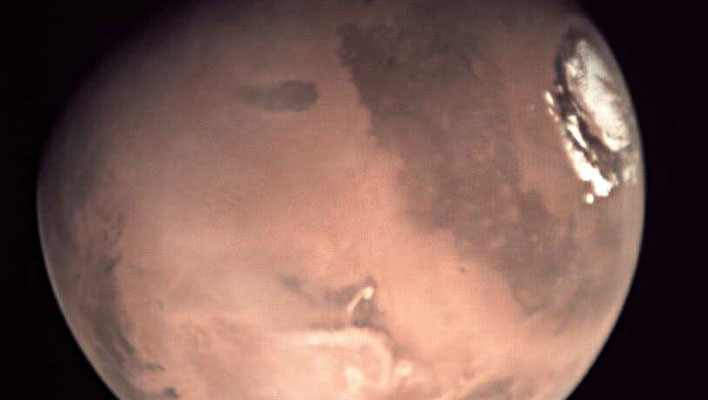The First-Ever Livestream From Mars Is Happening Today And You Can Watch Here

We know Mars exists because we've seen images of the Red Planet, though never in real time—by the time they're shared with the public, it could have been days, weeks, months, or even years after the images were actually taken and processed. That's about the change. The European Space Agency (ESA) is celebrating the 20th anniversary of its Mars Express by beaming down live images direct from Mars today.
There has never been a livestream from Mars before, so this is your chance to witness an historic event. Earthlings can tune in below starting at 12:00pm ET (9:00am PT, 6:00pm CEST). The goal is to show new images every 50 seconds as they're beamed directly from the Visual Monitoring Camera (VMC) on ESA's martian orbiter. It will last an hour long.
ESA also plans to provide live updates on its Twitter account (@esaoperations) with hashtag #MarsLIVE. Note that the camera was originally intended for engineering purposes, so "don't expect a detailed view of the Red Planet," ESA states. Still, this is a pretty cool thing to do.
That said, the term 'livestream' is being used a little loosely here. The reality of the situation is that we're still not at a point where we can beam images instantly, or even near instantly, from the likes of Mars. Depending on Earth's and Mars' relative position in orbit around the Sun, it normally takes anywhere from 3 to 22 minutes for this to happen.
"In this way, there’s actually no such thing as ‘live’ news in space as we are limited by the speed of light traversing great distances," ESA explains.

Time delay between Mars and Earth (Source: ESA)
That's just the raw time it takes, too. Normally what happens is that a spacecraft takes images and collects data when it is not in direct contact with a ground station antenna on Earth. The data gets stored for hours or days, after which they're processed and made available to the public.
"For most space missions, this works perfectly. Scientists then pore over the data that come in for years, discovering new secrets about the Universe. This makes ‘live’ footage rather rare," ESA says.
Today's livestream is unique in that images will be shared as quickly as possible, given the current orbits around the Sun. Assuming no hiccups (fingers crossed), it will take about 18 minutes to images to hit the livestream, which includes 17 minutes for light to travel from Mars to Earth, and an additional minute to work their way "through the wires and servers on the ground."
ESA points out that it has never attempted anything like this before, so the exact travel time is uncertain. Knock on wood that the Mars livestream goes off without a hitch (or glitch).
Top Image Source: ESA/D. O'Donnell - CC BY-SA IGO

